London based SEO expert with 10 years experience. Based in the US, I specialize in e-commerce SEO and data-driven strategies for global brands.
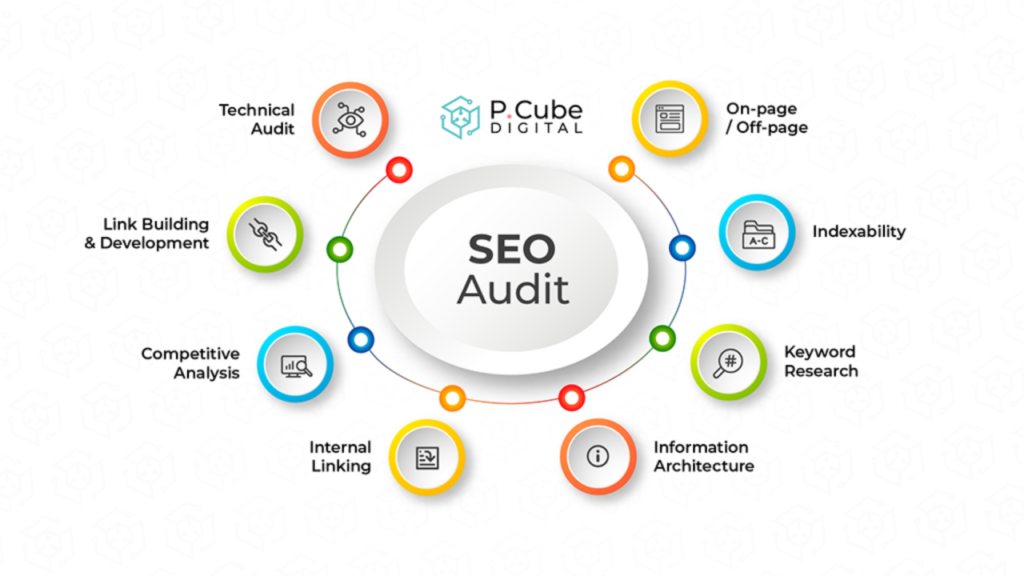
Search engine optimization (SEO) audits are a critical component of maintaining and improving a website’s online performance. They help identify issues that may hinder search visibility, user experience, or content quality, offering actionable insights to refine your strategy. This article delves into the essence of SEO audits, outlining their importance, processes, and best practices.
Introduction to SEO Audits
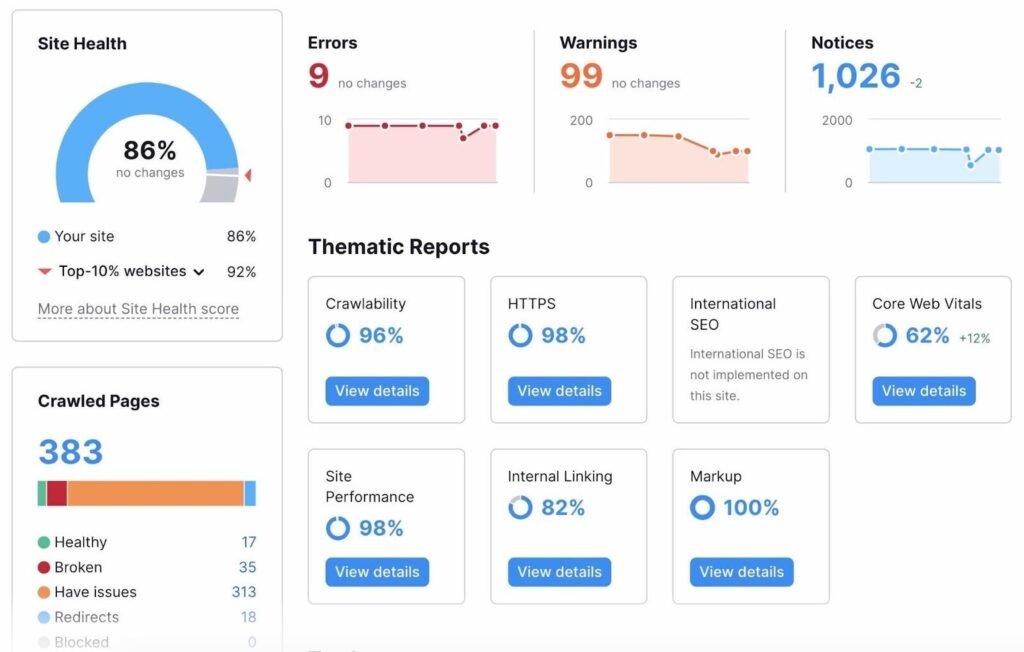
An SEO audit is a systematic evaluation of various factors that affect a website’s performance in search engines. This process helps uncover technical, on-page, and off-page issues while offering data-driven insights to enhance rankings, traffic, and user engagement.
SEO audits are essential for websites of all sizes and niches, ensuring that they remain competitive in a dynamic digital landscape. Whether you’re launching a new site or optimizing an existing one, regular audits are crucial to identify weaknesses and leverage opportunities.
Importance of an SEO Audit
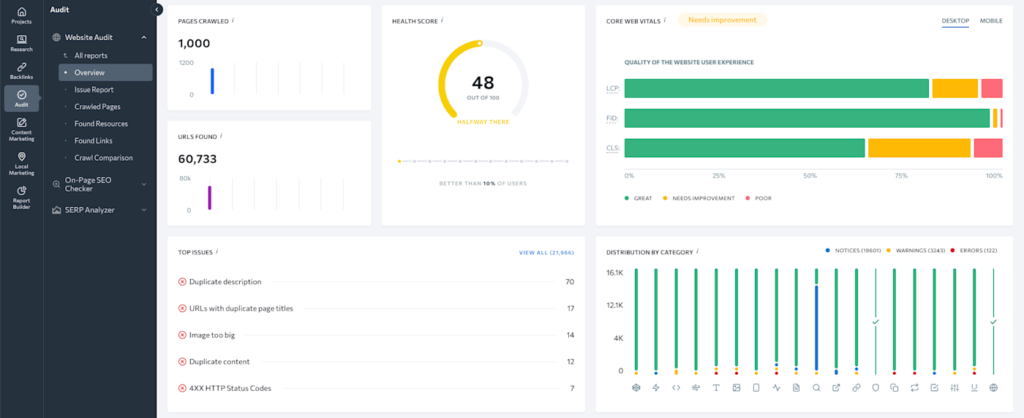
Before diving into the steps, it’s vital to understand why SEO audits matter. These evaluations are not just about spotting errors; they provide a roadmap to achieve long-term success in search engine rankings.
- Improves Visibility
Search engines favor websites that meet their guidelines. By addressing technical errors, optimizing content, and enhancing user experience, an SEO audit ensures your site aligns with these requirements, boosting visibility. - Enhances User Experience
An optimized website isn’t just for search engines; it’s also about providing a seamless experience for users. Audits identify issues like slow loading speeds or broken links, which can deter visitors and impact conversions. - Informs Content Strategy
An SEO audit offers insights into how your content is performing and whether it aligns with user intent. This enables you to refine your content strategy for better engagement and ranking potential. - Drives ROI
Investing in an SEO audit ensures a higher return on investment by eliminating inefficiencies and focusing on tactics that generate measurable results.
Core Components of an SEO Audit
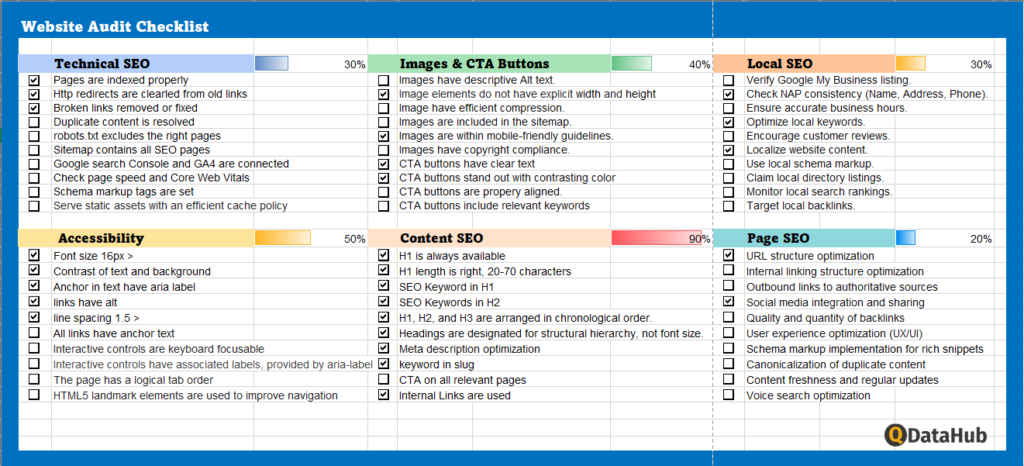
An SEO audit encompasses several key areas, each addressing specific elements of a website’s performance. Below, we explore the primary components in detail.
1. Technical SEO Audit
A technical audit focuses on the infrastructure of your website, ensuring it’s easily accessible and indexable by search engines.
- Crawlability: Verify that search engine bots can crawl your site without restrictions. Tools like Google Search Console and Screaming Frog help detect crawl errors.
- Indexation: Ensure only relevant pages are indexed. Exclude thin or duplicate content from search engine results.
- Site Speed: Page loading times significantly impact user experience and rankings. Tools like PageSpeed Insights can identify performance bottlenecks.
- Mobile Optimization: With mobile-first indexing, having a responsive design is crucial. Check for mobile usability issues.
- HTTPS Protocol: Ensure your site uses HTTPS for secure connections, as it’s a ranking factor.
2. On-Page SEO Audit
On-page elements play a pivotal role in search rankings. This audit examines the quality and relevance of individual pages.
- Title Tags and Meta Descriptions: Optimize these elements with target keywords while ensuring they are compelling and within the character limit.
- Content Quality: Evaluate whether your content provides value, answers user intent, and is free of plagiarism.
- Keyword Usage: Ensure proper placement of keywords in headers, content, and alt text without overstuffing.
- Internal Linking: Maintain a logical structure that helps users and search engines navigate the site effectively.
- Schema Markup: Implement structured data to enhance search visibility with rich snippets.
3. Off-Page SEO Audit
Off-page SEO evaluates factors external to your site that influence rankings, primarily backlinks.
- Backlink Profile: Analyze the quality, quantity, and relevance of inbound links using tools like Ahrefs or SEMrush.
- Anchor Text Distribution: Ensure natural and varied use of anchor text in backlinks.
- Toxic Links: Identify and disavow spammy or harmful backlinks.
- Brand Mentions: Monitor unlinked brand mentions and turn them into backlinks.
Step-by-Step SEO Audit Process
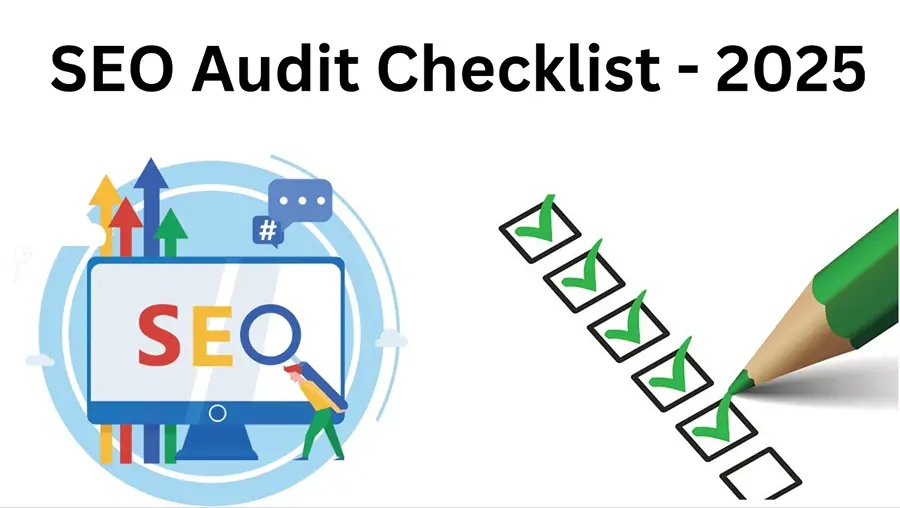
Conducting an SEO audit requires a structured approach. Follow these steps for a comprehensive evaluation.
- Define Objectives
Clarify the goals of the audit, such as improving rankings, boosting traffic, or resolving specific issues. - Gather Tools
Leverage tools like Google Analytics, SEMrush, Ahrefs, and Screaming Frog for data collection and analysis. - Conduct Technical Analysis
Examine your site’s technical health, addressing issues like crawl errors, broken links, and slow loading times. - Review On-Page Elements
Audit individual pages for content quality, keyword usage, and meta tag optimization. - Analyze Backlinks
Evaluate your backlink profile, identifying opportunities to gain high-quality links while disavowing harmful ones. - Compile Insights
Summarize findings in a clear, actionable report, prioritizing issues based on their impact. - Implement Changes
Collaborate with your team to address the identified issues and track the results.
Common SEO Audit Tools
To streamline the auditing process, here’s a table of popular SEO tools and their key features:
| Tool | Key Features | Price |
|---|---|---|
| Google Analytics | Traffic insights, user behavior analysis | Free |
| SEMrush | Keyword research, backlink analysis | Starts at $119.95/month |
| Ahrefs | Backlink audits, keyword tracking | Starts at $99/month |
| Screaming Frog | Technical SEO crawling, error detection | Free with premium at $209/year |
| PageSpeed Insights | Page loading speed analysis | Free |
Best Practices for Effective SEO Audits
- Regular Audits
Conduct audits at least quarterly to stay ahead of algorithm updates and competitors. - Custom Reporting
Tailor your findings to the needs of stakeholders, emphasizing actionable insights. - Collaboration
Work closely with developers, content creators, and marketers to implement changes effectively. - Track Progress
Use benchmarks to measure improvements after implementing recommendations.
Maintaining a strong online presence requires consistent evaluation and optimization. An SEO audit is not a one-time task but an ongoing process that evolves alongside your website’s needs and the ever-changing search engine algorithms. By following a structured approach and leveraging the right tools, you can ensure that your website stays competitive, providing users with a seamless and engaging experience while achieving your business goals.
